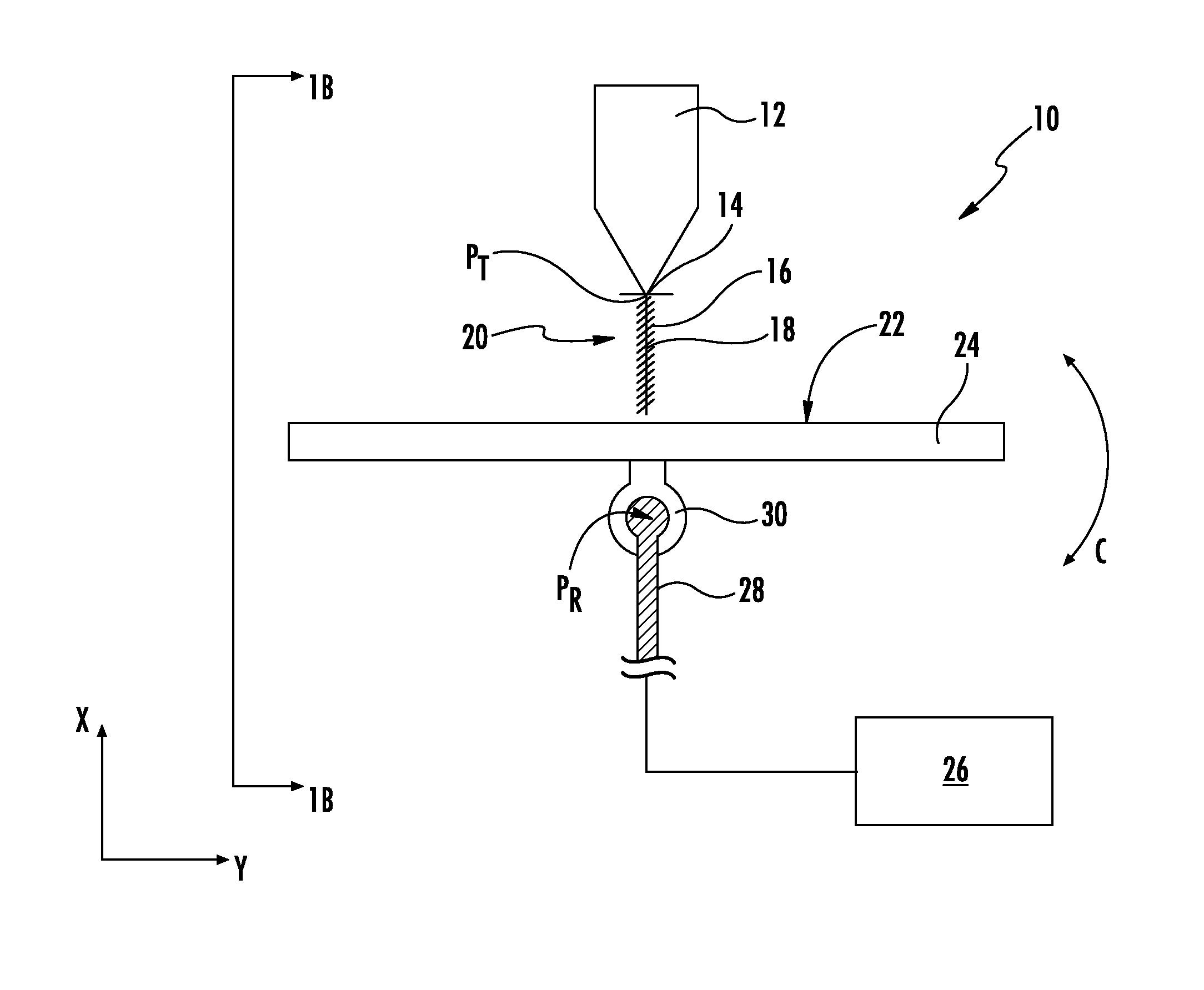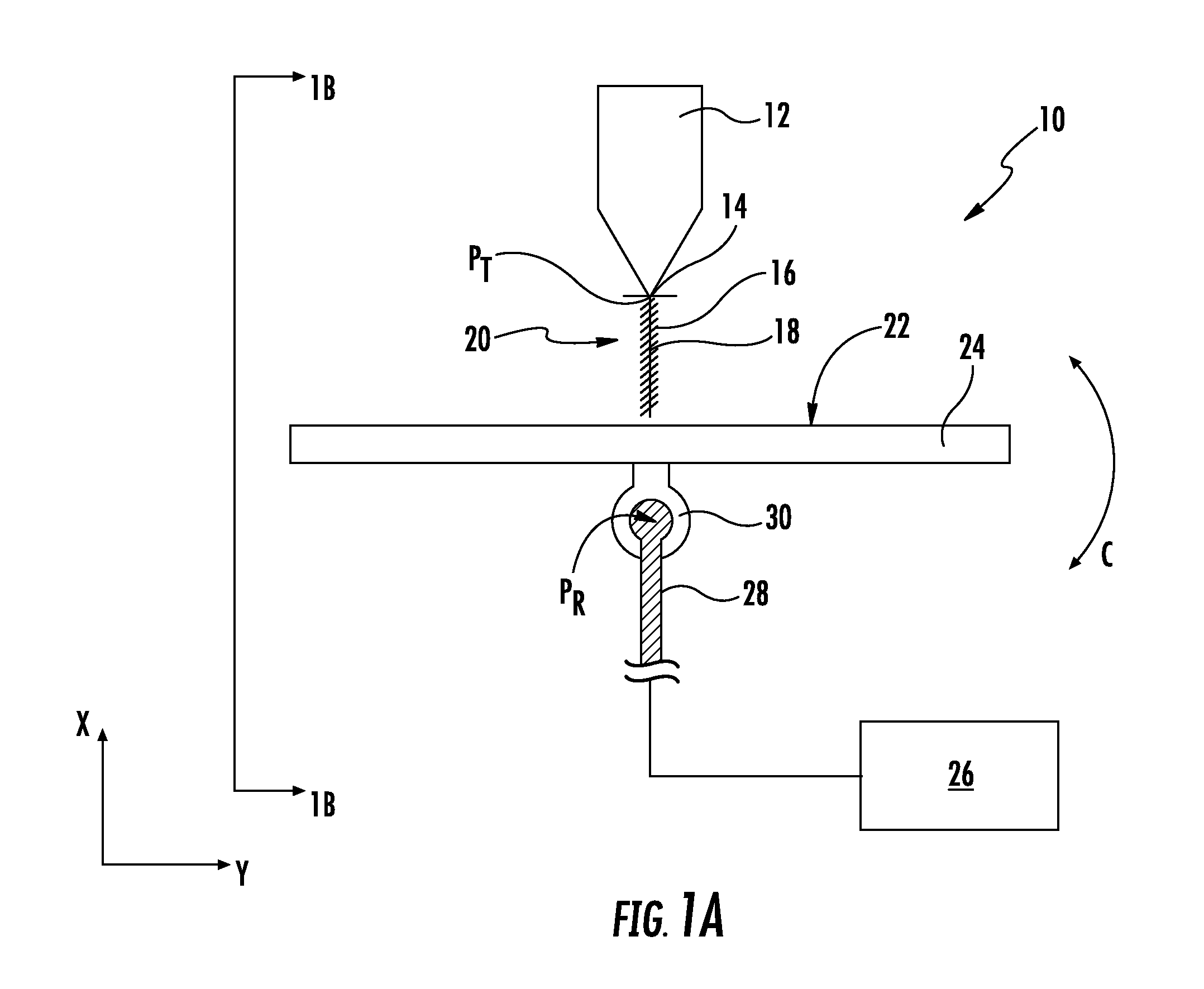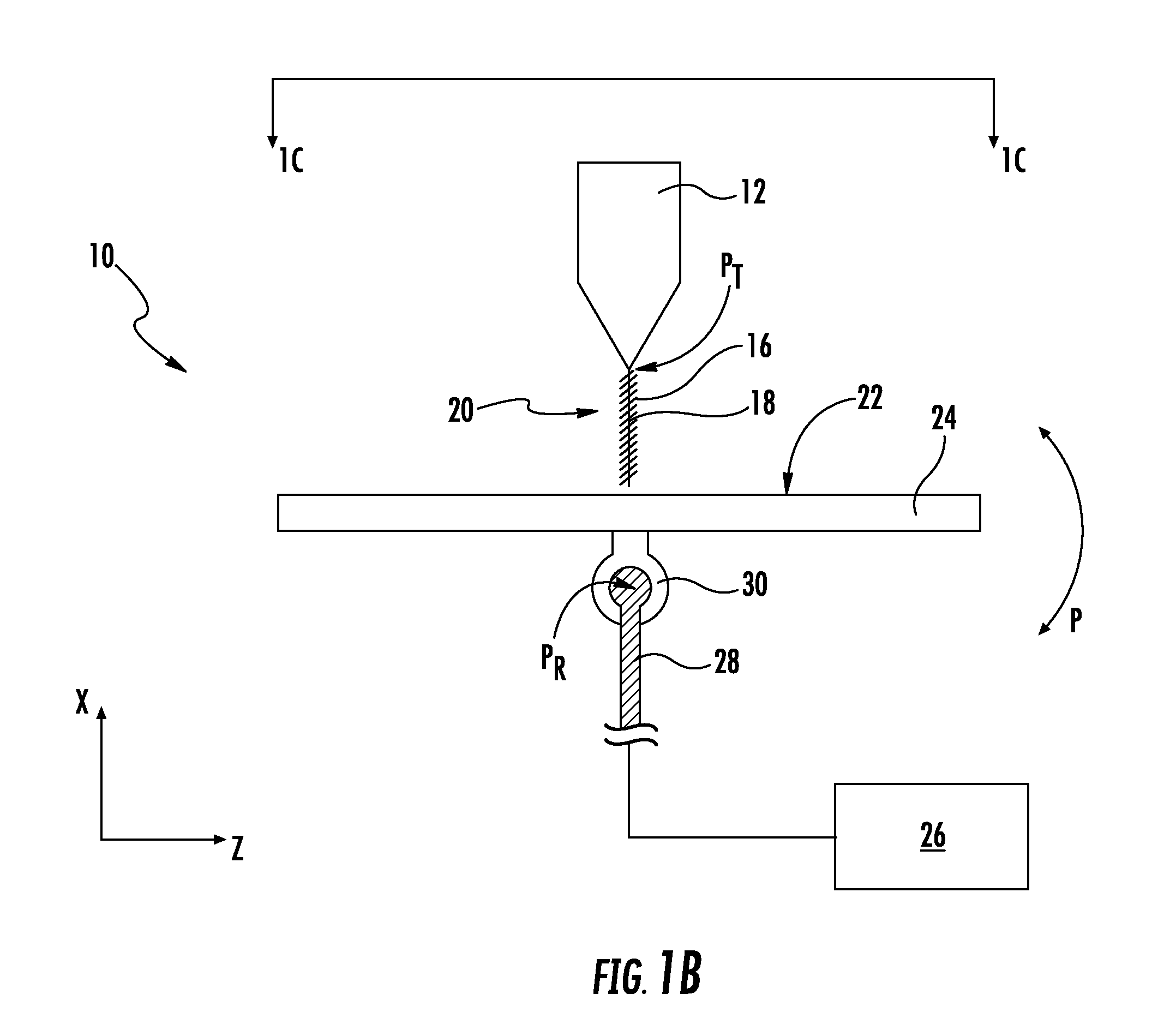Integrated robotic 3D printing system for printing of fiber reinforced parts
a fiber reinforced part and robotic technology, applied in the field of three-dimensional objects forming methods, can solve the problems of low polymer characteristics of highly crystalline polymers, limited technology for prototype formation,
- Summary
- Abstract
- Description
- Claims
- Application Information
AI Technical Summary
Benefits of technology
Problems solved by technology
Method used
Image
Examples
examples
[0048]A prototype set-up was developed that includes a 6 degrees of freedom robot with integrated industrial level controls to operate the extruder (print head), hotbed and temperature sensors. Integration of hardware and software has been achieved. Fiber reinforced material system has been defined and experiment preparations are in progress to do solvent based filament production.
[0049]A KUKA KR6 based robotic system was developed to print thin walled continuous carbon reinforced ULTEM ducting for use in vehicles. The system allows printing of carbon fiber reinforced ULTEM of thin walled ducts with fibers printed not only in the plane of the cross-section of the duct but also in directions with angles with respect to the cross-sectional plane. This is in contrast to current 3D printing systems based on printing layer by layer and therefore allowing only fibers in the cross-sectional plane. The system may offer seven (7) degrees of freedom (3 translations and 3 rotations related to ...
PUM
| Property | Measurement | Unit |
|---|---|---|
| ultimate tensile strength | aaaaa | aaaaa |
| tensile strengths | aaaaa | aaaaa |
| tensile strengths | aaaaa | aaaaa |
Abstract
Description
Claims
Application Information
 Login to View More
Login to View More - R&D
- Intellectual Property
- Life Sciences
- Materials
- Tech Scout
- Unparalleled Data Quality
- Higher Quality Content
- 60% Fewer Hallucinations
Browse by: Latest US Patents, China's latest patents, Technical Efficacy Thesaurus, Application Domain, Technology Topic, Popular Technical Reports.
© 2025 PatSnap. All rights reserved.Legal|Privacy policy|Modern Slavery Act Transparency Statement|Sitemap|About US| Contact US: help@patsnap.com



